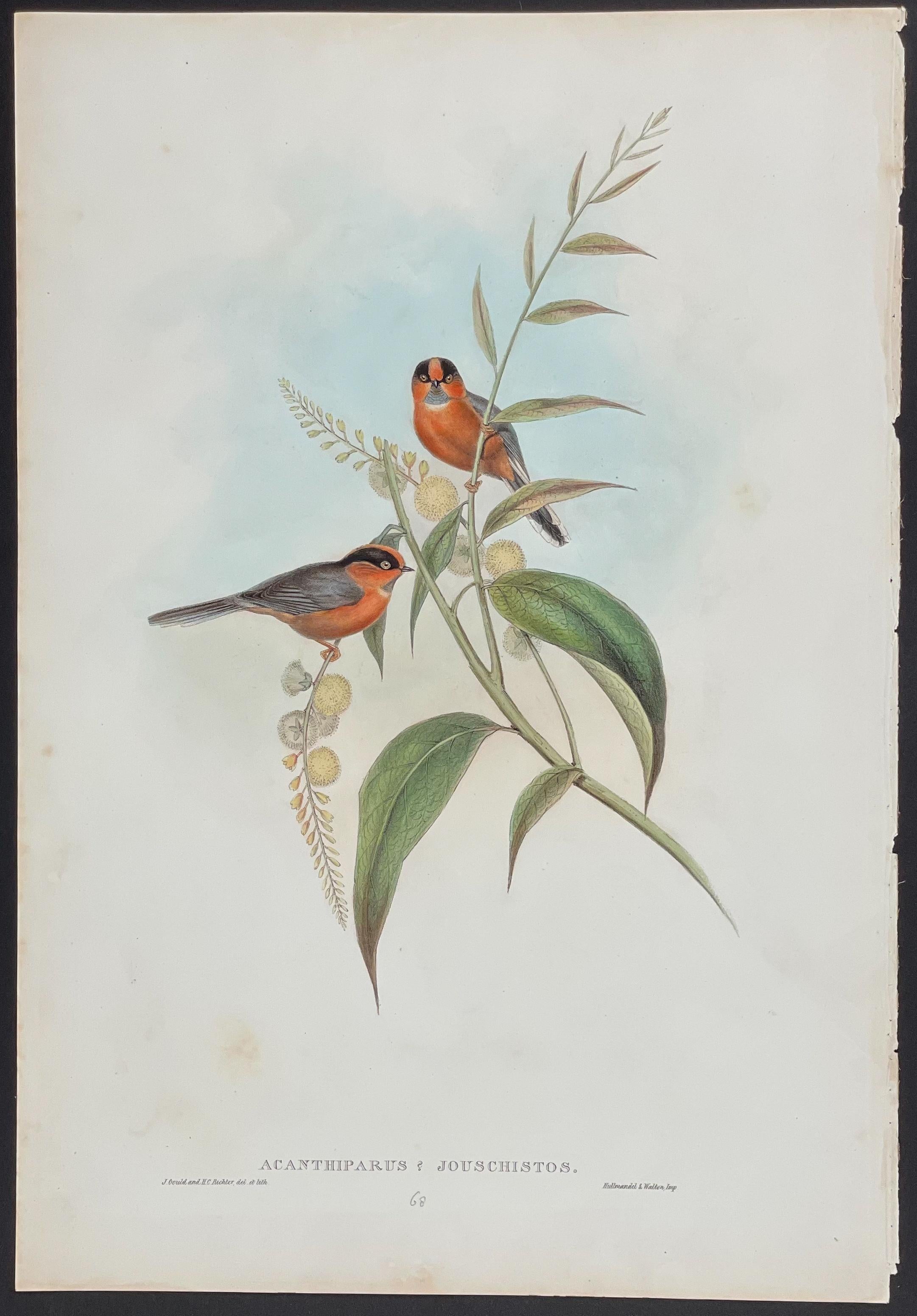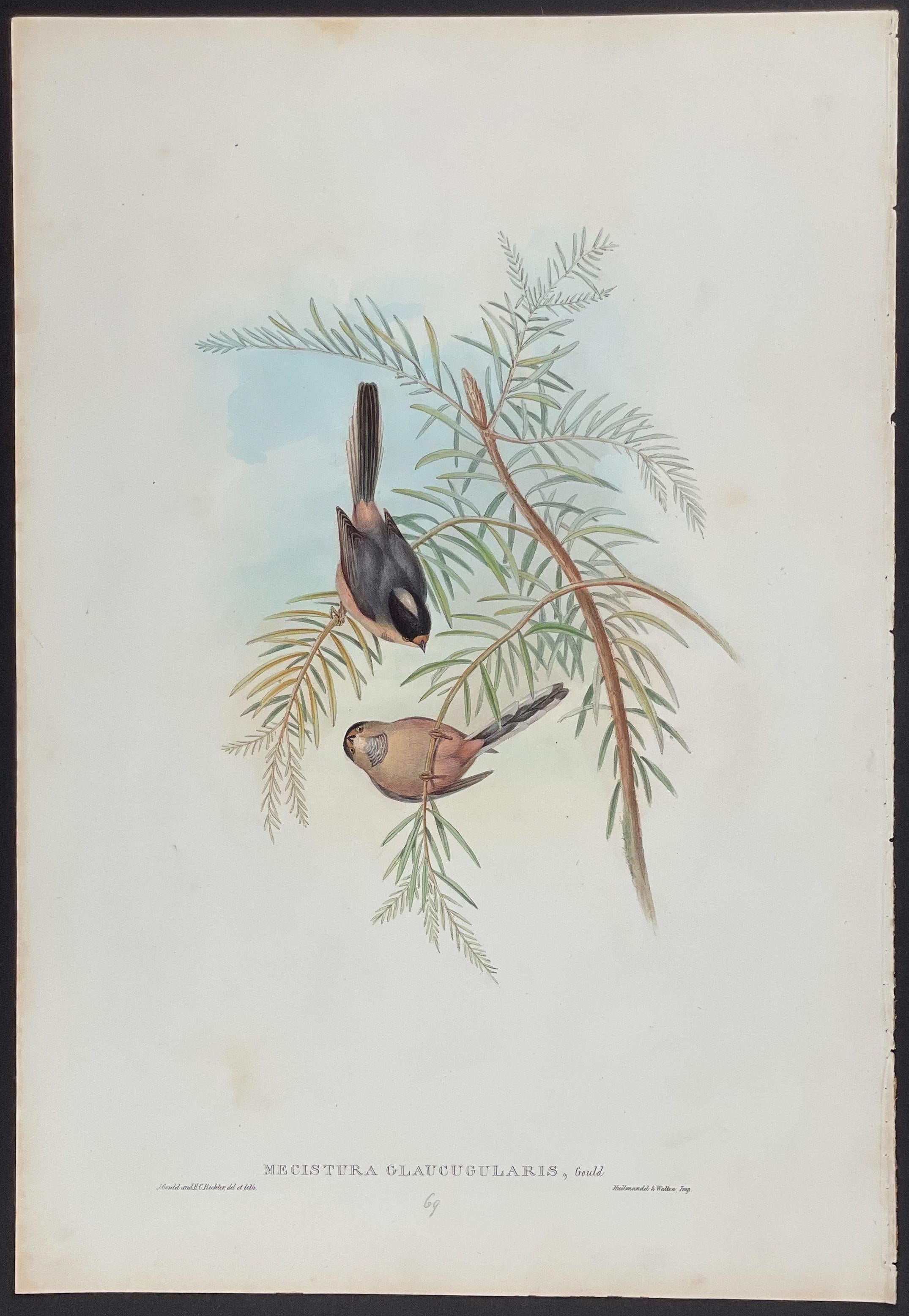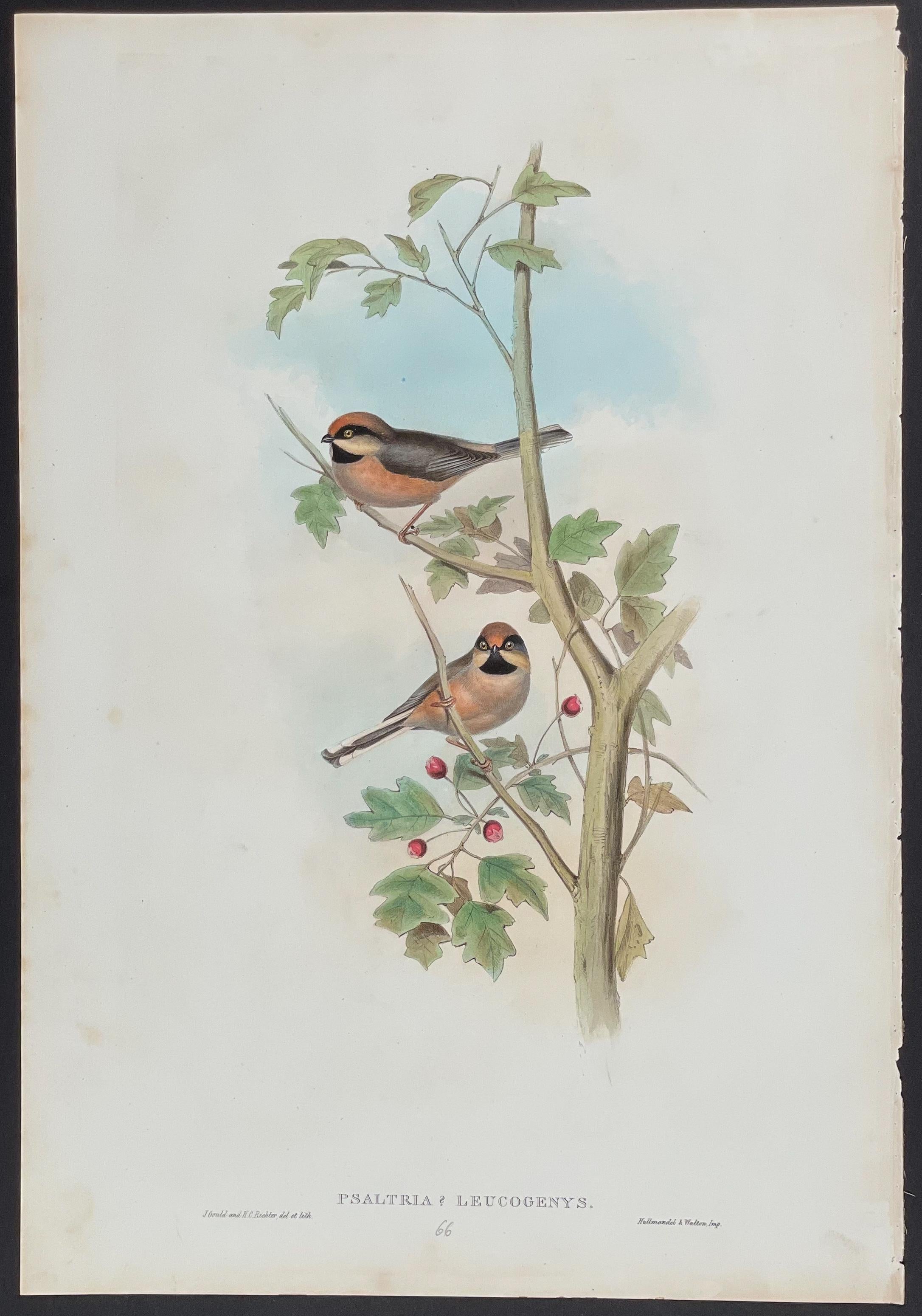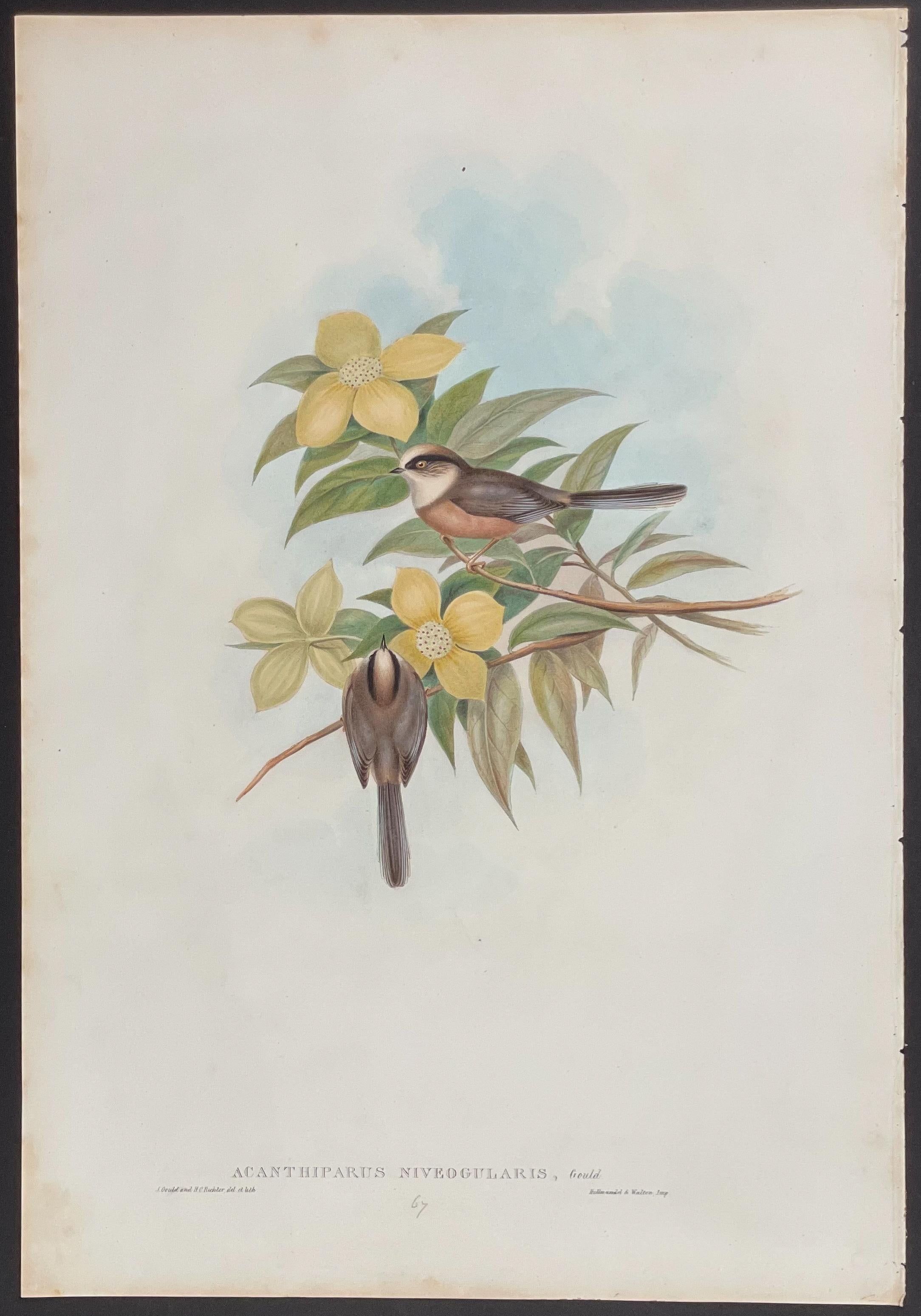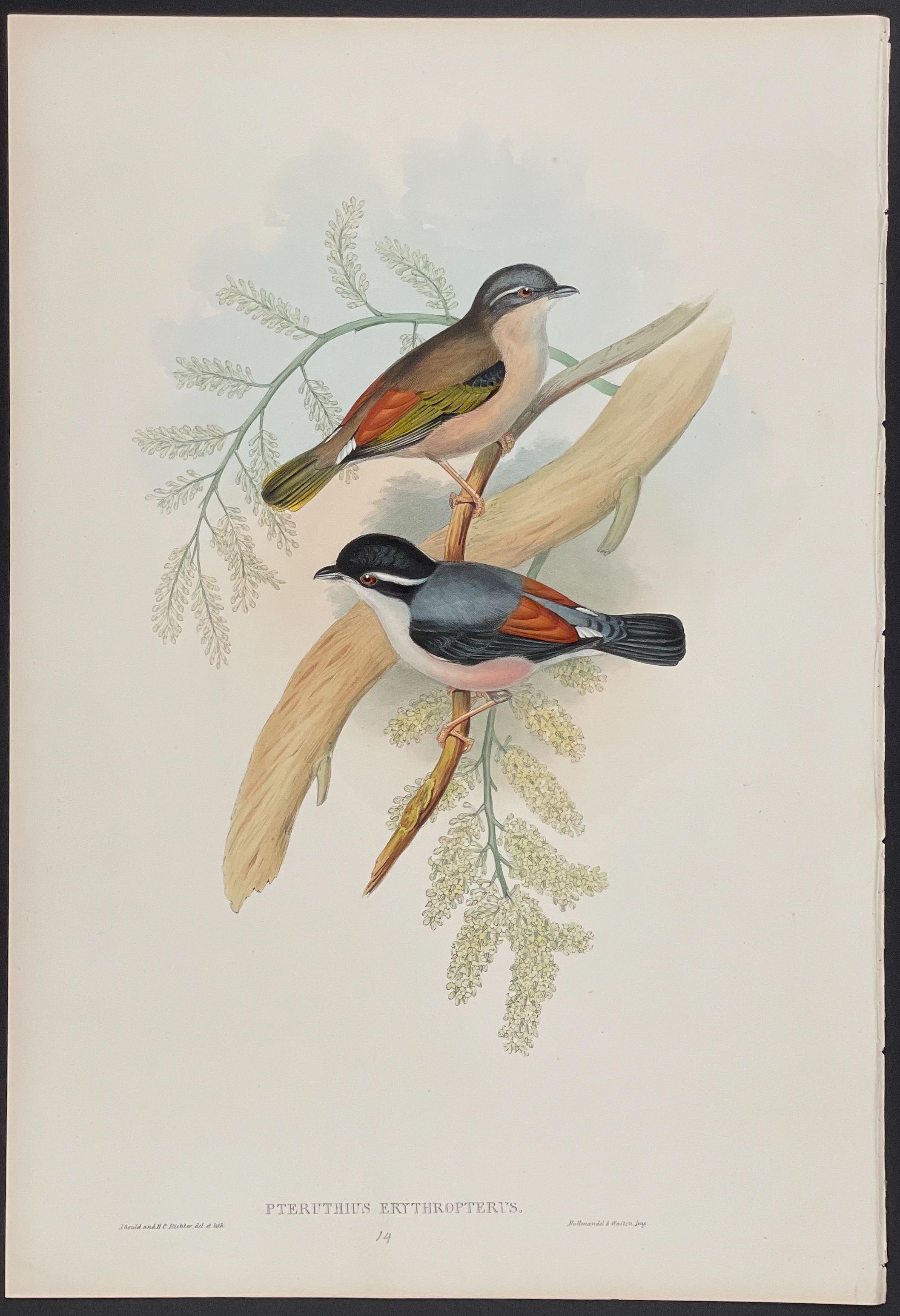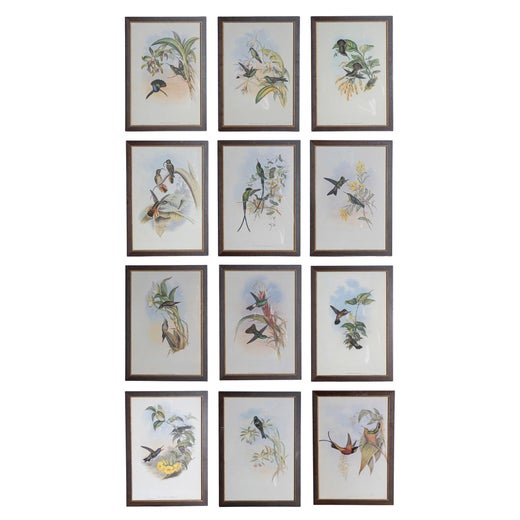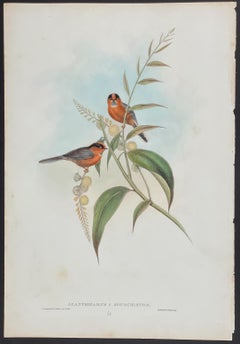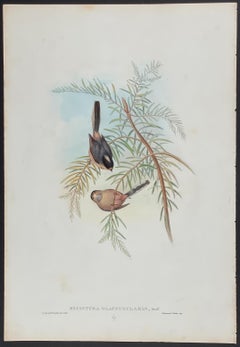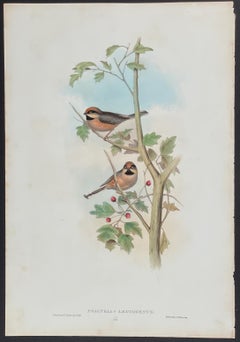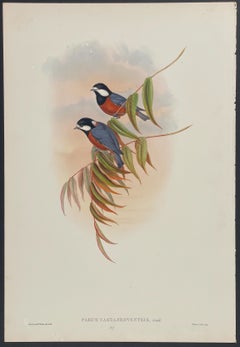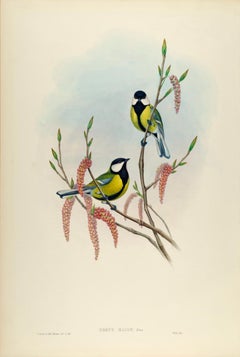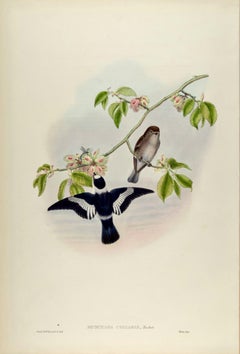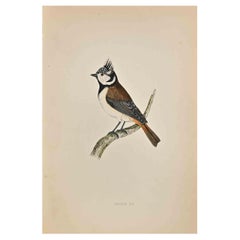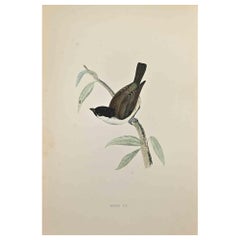John GouldJohn Gould - Elegant Tit from 'The Birds of Asia' C. 1850
About the Item
- Creator:John Gould (1804 - 1881, British)
- Dimensions:Height: 22.45 in (57 cm)Width: 13.39 in (34 cm)
- Medium:
- Period:
- Framing:Framing Options Available
- Condition:
- Gallery Location:BRUCE, AU
- Reference Number:1stDibs: LU1918210215012
John Gould
John Gould was an English ornithologist and bird artist. He published several monographs on birds, illustrated by plates that he produced with the assistance of his wife, Elizabeth Gould, and several other artists including Edward Lear, Henry Constantine Richter, Joseph Wolf and William Matthew Hart. Gould has been considered the father of bird study in Australia, and the Gould League in Australia is named after him. His identification of the birds now nicknamed Darwin's finches played a role in the inception of Darwin's theory of evolution by natural selection. Gould's work is referenced in Charles Darwin's book, On the Origin of Species.
- ShippingRetrieving quote...Shipping from: BRUCE, Australia
- Return Policy
More From This Seller
View AllLate 18th Century Animal Prints
Lithograph
Late 19th Century Animal Prints
Lithograph
Late 18th Century Animal Prints
Lithograph
Late 18th Century Animal Prints
Lithograph
Late 18th Century Animal Prints
Lithograph
Late 18th Century Animal Prints
Lithograph
You May Also Like
Mid-19th Century Naturalistic Animal Prints
Lithograph
Mid-19th Century Naturalistic Animal Prints
Lithograph
1870s Modern Figurative Prints
Woodcut
1870s Modern Figurative Prints
Woodcut
Mid-19th Century Naturalistic Animal Prints
Lithograph
1870s Modern Figurative Prints
Woodcut
